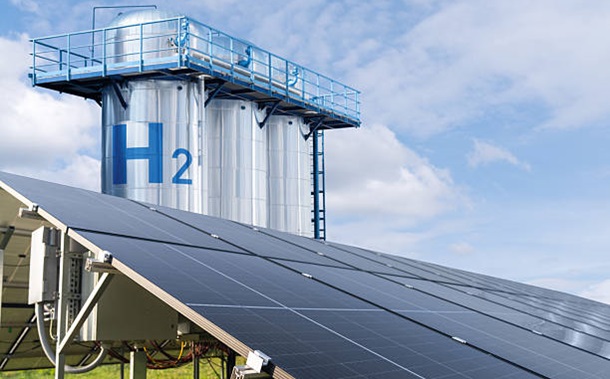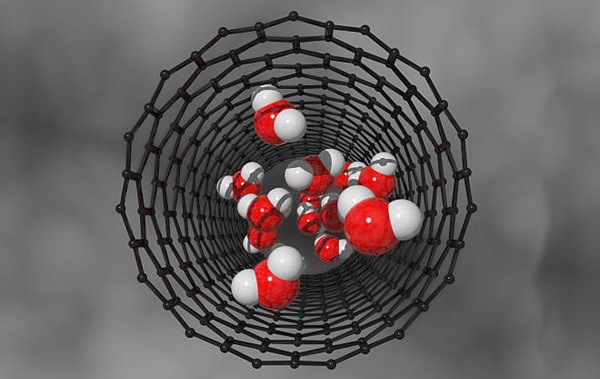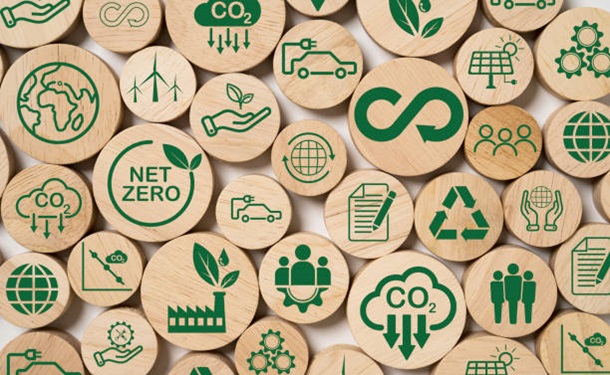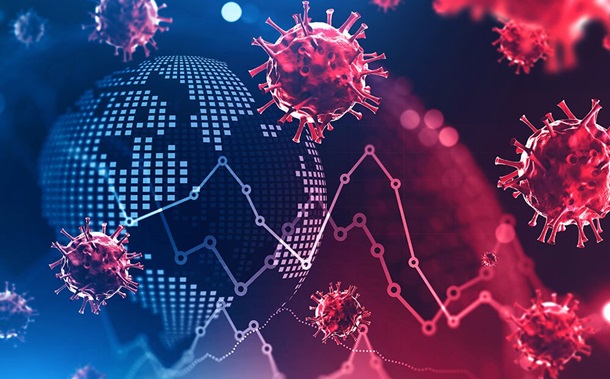Synthesis and Characterization of Hybridfiber from Gelatin Modified by PVACOS Using Coaxial Electrospinning Techniques as an Advanced Medical Textile Material
Downloads
Doi:10.28991/ESJ-2024-08-02-022
Full Text:PDF
Downloads
Meier, P., Zabara, M., Hirsch, C., Gogos, A., Tscherrig, D., Richner, G., Nowack, B., & Wick, P. (2022). Evaluation of fiber and debris release from protective COVID-19 mask textiles and in vitro acute cytotoxicity effects. Environment International, 167, 107364. doi:10.1016/j.envint.2022.107364.
Setiawan, K. (2015). 94 Percent of Surgical Threads in Indonesia are Imported. Tempo Co, Jakarta, Indonesia. Available online: https://gaya.tempo.co/read/702241/94-persen-benang-bedah-di-indonesia-impor (accessed on March 2024).
Parvin, F., Islam, S., Urmy, Z., & Ahmed, S. (2020). A Study on the Textile Materials Applied in Human Medical Treatment. European Journal of Physiotherapy and Rehabilitation Studies, 1, 57. doi:10.5281/ZENODO.3779236.
Durand, D., Faure, M., Lamberton, P., Lemosquet, S., & de Boyer des Roches, A. (2021). A multiparametric approach to assessing residual pain experienced by dairy cows undergoing digestive tract surgery under multimodal analgesia. Animal, 15(9), 100338. doi:10.1016/j.animal.2021.100338.
Baybaş, D., Serdaroğlu, G., & Semerci, B. (2021). The composite microbeads of alginate, carrageenan, gelatin, and poly(lactic-co-glycolic acid): Synthesis, characterization and Density Functional Theory calculations. International Journal of Biological Macromolecules, 181, 322–338. doi:10.1016/j.ijbiomac.2021.03.128.
Sangkert, S., Kamolmatyakul, S., Gelinsky, M., & Meesane, J. (2021). 3D printed scaffolds of alginate/polyvinylalcohol with silk fibroin based on mimicked extracellular matrix for bone tissue engineering in maxillofacial surgery. Materials Today Communications, 26, 102140. doi:10.1016/j.mtcomm.2021.102140.
Jiang, L. B., Ding, S. L., Ding, W., Su, D. H., Zhang, F. X., Zhang, T. W., Yin, X. F., Xiao, L., Li, Y. L., Yuan, F. L., & Dong, J. (2021). Injectable sericin based nanocomposite hydrogel for multi-modal imaging-guided immunomodulatory bone regeneration. Chemical Engineering Journal, 418, 129323. doi:10.1016/j.cej.2021.129323.
Sinsinwar, S., & Vadivel, V. (2021). Development and characterization of catechin-in-cyclodextrin-in-phospholipid liposome to eradicate MRSA-mediated surgical site infection: Investigation of their anti-infective efficacy through in vitro and in vivo studies. International Journal of Pharmaceutics, 609, 121130. doi:10.1016/j.ijpharm.2021.121130.
Ruiz-Tovar, J., Llavero, C., Jimenez-Fuertes, M., Duran, M., Perez-Lopez, M., & Garcia-Marin, A. (2020). Incisional Surgical Site Infection after Abdominal Fascial Closure with Triclosan-Coated Barbed Suture vs Triclosan-Coated Polydioxanone Loop Suture vs Polydioxanone Loop Suture in Emergent Abdominal Surgery: A Randomized Clinical Trial. Journal of the American College of Surgeons, 230(5), 766–774. doi:10.1016/j.jamcollsurg.2020.02.031.
dos Santos, C. H. M., dos Santos Filho, K. G., Cassino, P. C., Chiquetti, C. V., de Mello, A. P., & Dourado, D. M. (2017). Differences between polydioxanone and poliglactin in intestinal anastomoses - A comparative study of intestinal anastomoses. Journal of Coloproctology, 37(4), 263–267. doi:10.1016/j.jcol.2017.05.004.
Mohammadi, H., Alihosseini, F., & Hosseini, S. A. (2020). Improving physical and biological properties of nylon monofilament as suture by Chitosan/Hyaluronic acid. International Journal of Biological Macromolecules, 164, 3394–3402. doi:10.1016/j.ijbiomac.2020.08.081.
Dittmer, S., Paepke, S., Klein, E., Ohlinger, R., & Kiechle, M. (2012). 614 First Experiences with the Implementation of a Two Component Polypropylen-vicryl Mesh (SERAGYN® BR) as Tissue-supporting Extraneous Material in Plastic Reconstructive Surgery. European Journal of Cancer, 48, S224. doi:10.1016/s0959-8049(12)70679-2.
Gressier, P., De Smet, D., Behary, N., Campagne, C., & Vanneste, M. (2019). Antibacterial polyester fabrics via diffusion process using active bio-based agents from essential oils. Industrial Crops and Products, 136, 11–20. doi:10.1016/j.indcrop.2019.04.014.
Lopetuso, L. R., De Salvo, C., Di Martino, L., Rana, N., Goodman, W., Scaldaferri, F., Armuzzi, A., Gasbarrini, A., & Pizarro, T. T. (2018). Oc.02.1 Il-33 Promotes Gut Mucosal Wound Healing By Inducing Mirna-320 To Stimulate Epithelial Restitution and Repair. Digestive and Liver Disease, 50(2), e71. doi:10.1016/s1590-8658(18)30273-1.
Porrelli, D., Berton, F., Camurri Piloni, A., Kobau, I., Stacchi, C., Di Lenarda, R., & Rizzo, R. (2021). Evaluating the stability of extended-pour alginate impression materials by using an optical scanning and digital method. Journal of Prosthetic Dentistry, 125(1), 189.e1-189.e7. doi:10.1016/j.prosdent.2020.06.022.
Zheng, W., Chen, C., Zhang, X., Wen, X., Xiao, Y., Li, L., Xu, Q., Fu, F., Diao, H., & Liu, X. (2021). Layer-by-layer coating of carboxymethyl chitosan-gelatin-alginate on cotton gauze for hemostasis and wound healing. Surface and Coatings Technology, 406, 126644. doi:10.1016/j.surfcoat.2020.126644.
Fatimah, S., Sarto, S., Fahrurrozi, M., & Budhijanto, B. (2023). Characterization and Development of Gelatin from Cow Bones: Investigation of the Effect of Solvents Used for Soaking Beef Bones. Applied Sciences (Switzerland), 13(3), 1550. doi:10.3390/app13031550.
Aksun Tümerkan, E. T., Cansu, íœ., Boran, G., Regenstein, J. Mac, & Özoğul, F. (2019). Physiochemical and functional properties of gelatin obtained from tuna, frog and chicken skins. Food Chemistry, 287, 273–279. doi:10.1016/j.foodchem.2019.02.088.
Hamzah, N., Fadhlurrahman, M., Ningsi, S., & Haeria, H. (2019). Profil Indeks Pengembangan Ikatan-Silang Gelatin-Kitosan. Ad-Dawaa' Journal of Pharmaceutical Sciences, 2(2). doi:10.24252/djps.v2i2.12147.
Bichukale, A. D., Koli, J. M., Sonavane, A. E., Vishwasrao, V. V., Pujari, K. H., & Shingare, P. E. (2018). Functional properties of gelatin extracted from poultry skin and bone waste. International Journal of Pure & Applied Bioscience, 6(4), 87-101. doi:10.18782/2320-7051.6768.
Ahmed, M. A., Al-Kahtani, H. A., Jaswir, I., AbuTarboush, H., & Ismail, E. A. (2020). Extraction and characterization of gelatin from camel skin (potential halal gelatin) and production of gelatin nanoparticles. Saudi Journal of Biological Sciences, 27(6), 1596–1601. doi:10.1016/j.sjbs.2020.03.022.
Mulyani, S., Aristia, K. S., Sabrina, A. P., Arfiah, A., & Niam, B. (2020). Potential of Water Extract of The White Frangipani (Plumeria acuminate) and Hibiscus (Hibiscus tiliaceus) Leaves Powder as Textile Natural Dyes. JKPK (Jurnal Kimia dan Pendidikan Kimia), 5(1), 100-109.
Hatamvand, M., Kamrani, E., Lira-Cantú, M., Madsen, M., Patil, B. R., Vivo, P., Mehmood, M. S., Numan, A., Ahmed, I., & Zhan, Y. (2020). Recent advances in fiber-shaped and planar-shaped textile solar cells. Nano Energy, 71, 104609. doi:10.1016/j.nanoen.2020.104609.
Wang, X., Hou, M., Liu, X., Yue, O., & Zheng, M. (2021). Feasibility Study of Gelatin Preparation from the Bioinspired Collagen Aggregates by a "two-step” Facile Degradation Method. ACS Applied Bio Materials, 4(3), 2363–2372. doi:10.1021/acsabm.0c01215.
Cao, C., Wang, F., & Lu, M. (2020). Preparation of superhydrophobic CuS cotton fabric with photocatalytic and antibacterial activity for oil/water separation. Materials Letters, 260, 126956. doi:10.1016/j.matlet.2019.126956.
Li, P., Wang, B., Liu, Y. Y., Xu, Y. J., Jiang, Z. M., Dong, C. H., Zhang, L., Liu, Y., & Zhu, P. (2020). Fully bio-based coating from chitosan and phytate for fire-safety and antibacterial cotton fabrics. Carbohydrate Polymers, 237, 116173. doi:10.1016/j.carbpol.2020.116173.
Dinh, N. H., Tran, H. Van, & Choi, K. K. (2020). Direct shear behavior of cementitious mortar reinforced by carbon fiber textile. Construction and Building Materials, 249, 118760. doi:10.1016/j.conbuildmat.2020.118760.
Drago, E., Campardelli, R., Barbucci, A., & Perego, P. (2023). Polycaprolactone sub-micrometric fibers optimization for primary packaging loaded with fatty acids as natural phase change materials. Journal of Food Engineering, 358, 111680. doi:10.1016/j.jfoodeng.2023.111680.
Obisesan, O. S., Ajiboye, T. O., Mhlanga, S. D., & Mufhandu, H. T. (2023). Biomedical applications of biodegradable polycaprolactone-functionalized magnetic iron oxides nanoparticles and their polymer nanocomposites. Colloids and Surfaces B: Biointerfaces, 227, 113342. doi:10.1016/j.colsurfb.2023.113342.
Akshay Kumar, K. P., Zare, E. N., Torres-Mendieta, R., WacŠ‚awek, S., Makvandi, P., Černík, M., Padil, V. V. T., & Varma, R. S. (2021). Electrospun fibers based on botanical, seaweed, microbial, and animal sourced biomacromolecules and their multidimensional applications. International Journal of Biological Macromolecules, 171, 130–149. doi:10.1016/j.ijbiomac.2020.12.205.
Taheri, P., & Khajeh-Amiri, A. (2020). Antibacterial cotton fabrics via immobilizing silver phosphate nanoparticles onto the chitosan nanofiber coating. International Journal of Biological Macromolecules, 158, 282–289. doi:10.1016/j.ijbiomac.2020.04.258.
Yan, J., He, S., Chen, L., Chen, H., & Wang, W. (2023). Characterization, antioxidant and antibacterial activities of gelatin-chitosan edible coated films added with Cyclocarya paliurus flavonoids. International Journal of Biological Macromolecules, 253, 127664. doi:10.1016/j.ijbiomac.2023.127664.
Yang, H., Tan, X., Du, G., Ni, K., Wu, Y., Li, Z., Ran, X., Gao, W., Li, J., & Yang, L. (2023). Development of biomass adhesives based on aminated cellulose and oxidized sucrose reinforced with epoxy functionalized wood interface. Composites Part B: Engineering, 263, 110872. doi:10.1016/j.compositesb.2023.110872.
Kovačičin, J., Hauzerová, S., Běhálek, L., Lukáš, D., & Kuželová KošŠ¥áková, E. (2024). Sponge-like wet electrospun polycaprolactone fibres. Materials Letters, 355, 135460. doi:10.1016/j.matlet.2023.135460.
Tyuftin, A. A., & Kerry, J. P. (2021). Gelatin films: Study review of barrier properties and implications for future studies employing biopolymer films. Food Packaging and Shelf Life, 29, 100688. doi:10.1016/j.fpsl.2021.100688.
Sathisaran, I., & Balasubramanian, M. (2020). Physical characterization of chitosan/gelatin-alginate composite beads for controlled release of urea. Heliyon, 6(11), 5495. doi:10.1016/j.heliyon.2020.e05495.
Nasseri, F., Rokhsat, E., & Dorranian, D. (2016). Low power continues wave nonlinear optics in red BS dye doped PVA thin film. Optik, 127(17), 6813–6820. doi:10.1016/j.ijleo.2016.05.026.
Jalaja, K., & James, N. R. (2015). Electrospun gelatin nanofibers: A facile cross-linking approach using oxidized sucrose. International Journal of Biological Macromolecules, 73(1), 270–278. doi:10.1016/j.ijbiomac.2014.11.018.
Subbiah, T., Bhat, G. S., Tock, R. W., Parameswaran, S., & Ramkumar, S. S. (2005). Electrospinning of nanofibers. Journal of Applied Polymer Science, 96(2), 557–569. doi:10.1002/app.21481.
Xing, J., Zhang, M., Liu, X., Wang, C., Xu, N., & Xing, D. (2023). Multi-material electrospinning: from methods to biomedical applications. Materials Today Bio, 21, 100710. doi:10.1016/j.mtbio.2023.100710.
Ding, B., Yu, J., & Wang, X. (2018). Electrospinning: Nanofabrication and applications. In Electrospinning: Nanofabrication and Applications. Elsevier. doi:10.1016/C2016-0-01374-8.
Gani, B. A., Asmah, N., Soraya, C., Syafriza, D., Rezeki, S., Nazar, M., ... & Soedarsono, N. (2023). Characteristics and antibacterial properties of film membrane of chitosan-resveratrol for wound dressing. Emerging Science Journal, 7(3), 821-842. doi:10.28991/ESJ-2023-07-03-012.
Vaseashta, A., & Bölgen, N. (2022). Electrospun Nanofibers: Principles, Technology and Novel Applications. Electrospun Nanofibers: Principles, Technology and Novel Applications, 1–766. doi:10.1007/978-3-030-99958-2.
Ali, I. H., Elkashlan, A. M., Hammad, M. A., & Hamdi, M. (2023). Antimicrobial and anti-SARS-CoV-2 activities of smart daclatasvir-chitosan/gelatin nanoparticles-in-PLLA nanofibrous medical textiles; in vitro, and in vivo study. International Journal of Biological Macromolecules, 253, 127350. doi:10.1016/j.ijbiomac.2023.127350.
Khadayeir, A. A., Wannas, A. H., & Yousif, F. H. (2022). Effect of Applying Cold Plasma on Structural, Antibacterial and Self Cleaning Properties of α-Fe2O3 (HEMATITE) Thin Film. Emerging Science Journal, 6(1), 75–85. doi:10.28991/ESJ-2022-06-01-06.
Sinha, M. K., Das, B. R., Bharathi, D., Prasad, N. E., Kishore, B., Raj, P., & Kumar, K. (2020). Electrospun nanofibrous materials for biomedical textiles. Materials Today: Proceedings, 21, 1818–1826. doi:10.1016/j.matpr.2020.01.236.
Pato, U., Ayu, D. F., Riftyan, E., Restuhadi, F., Pawenang, W. T., Firdaus, R., Rahma, A., & Jaswir, I. (2022). Cellulose Microfiber Encapsulated Probiotic: Viability, Acid and Bile Tolerance during Storage at Different Temperature. Emerging Science Journal, 6(1), 106–117. doi:10.28991/ESJ-2022-06-01-08.
Khanlou, H. M., Ang, B. C., Talebian, S., Barzani, M. M., Silakhori, M., & Fauzi, H. (2015). Multi-response analysis in the processing of poly (methyl methacrylate) nano-fibres membrane by electrospinning based on response surface methodology: Fibre diameter and bead formation. Measurement: Journal of the International Measurement Confederation 65, 193–206. doi:10.1016/j.measurement.2015.01.014.
Ahmadipourroudposht, M., Fallahiarezoudar, E., Yusof, N. M., & Idris, A. (2015). Application of response surface methodology in optimization of electrospinning process to fabricate (ferrofluid/polyvinyl alcohol) magnetic nanofibers. Materials Science and Engineering C, 50, 234–241. doi:10.1016/j.msec.2015.02.008.
- This work (including HTML and PDF Files) is licensed under a Creative Commons Attribution 4.0 International License.



















